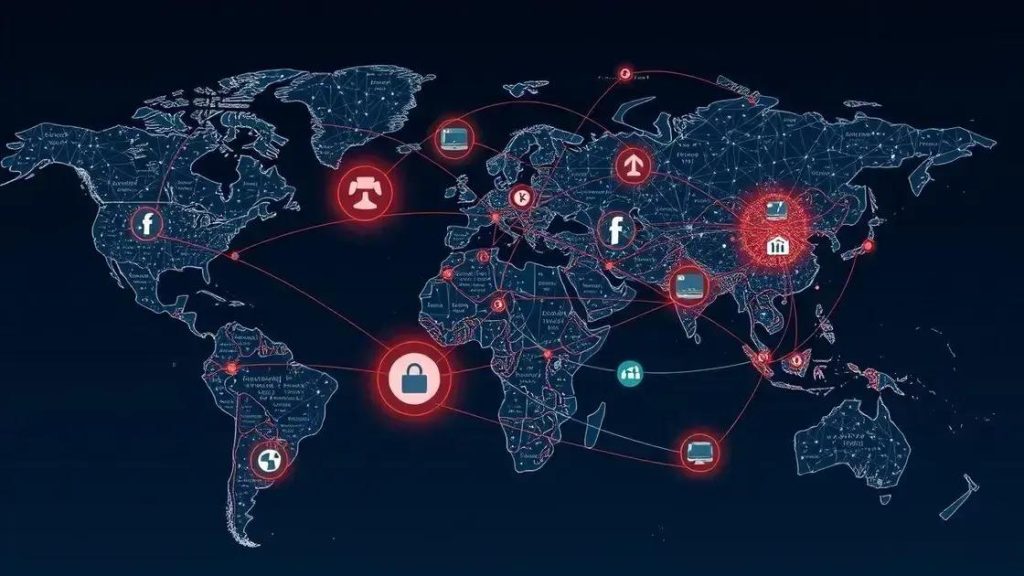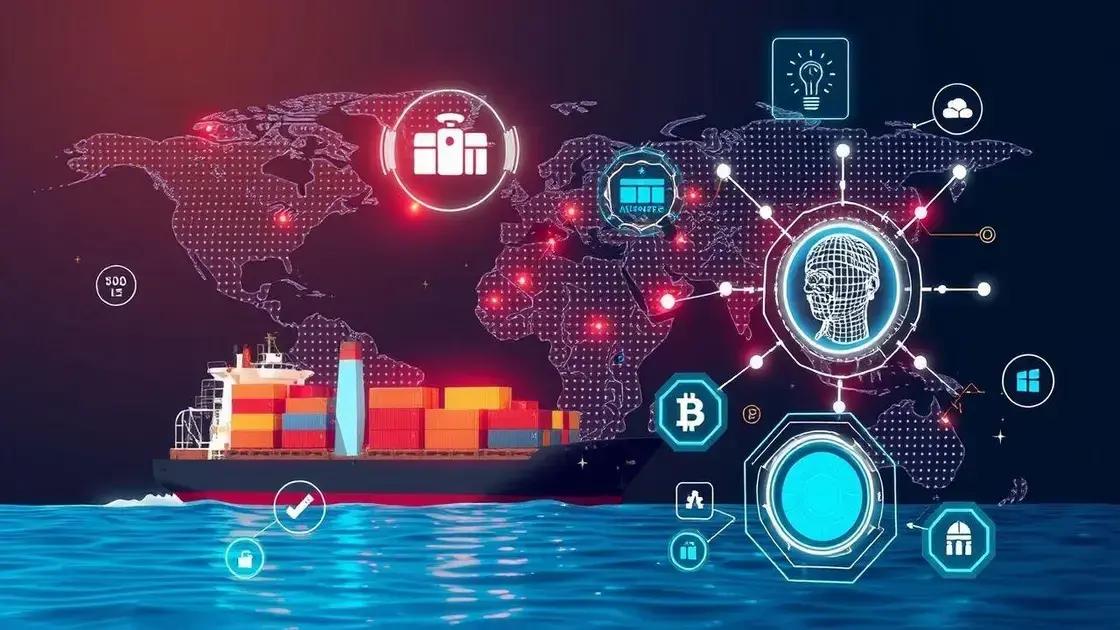Global economy trends shaping our financial future

Anúncios
Forecasting future economic trends involves analyzing data and indicators to predict changes, aiding businesses and governments in strategic planning and risk management amidst uncertainties.
Global economy trends are constantly evolving, affecting everything from local businesses to international markets. Have you ever wondered how these shifts might influence your daily life or investment decisions?
Anúncios
current state of global economy
The current state of the global economy is a complex canvas influenced by various factors. Businesses around the world have had to adapt rapidly to changes, making it crucial to understand what drives these shifts.
Key Indicators of Economic Health
Several indicators highlight the economic landscape today.
Anúncios
- GDP Growth: Understanding GDP is essential, as it reflects the overall economic activity.
- Unemployment Rates: Low unemployment suggests a healthy job market.
- Inflation: While some inflation is normal, excessive levels can hurt buying power.
- Consumer Confidence: This drives spending, which affects overall economic health.
Changes in consumer behavior also impact how economies function. For instance, more people are shopping online, which has shifted income opportunities for brick-and-mortar stores.
Global Challenges
Despite the signs of recovery in many regions, challenges remain. Trade tensions, energy prices, and geopolitical events continue to create uncertainties in the market.
Another factor is the impact of technology and automation. These advancements can boost productivity but may also lead to job displacement in various sectors.
Bridging Economic Gaps
Moreover, addressing economic disparities between countries is more crucial than ever. Development programs and international cooperation can help bridge these gaps. Countries that invest in sustainable practices are likely to thrive in the long run.
As we reflect on these trends, understanding the current state of the global economy is essential for individuals and businesses alike. Keeping informed allows for better decision-making and strategic planning moving forward.
emerging market opportunities
Emerging market opportunities are becoming increasingly important in today’s interconnected economy. These markets often present unique prospects for businesses willing to adapt and invest.
Understanding Emerging Markets
Emerging markets are countries that are experiencing rapid economic growth and industrialization. They often have developing infrastructure and a rising middle class, which can lead to increased demand for goods and services.
- High Growth Potential: Emerging markets can offer higher return rates compared to developed markets.
- Diversification: Investing in these regions can diversify a portfolio and reduce risk.
- Young Population: Many emerging markets have young, dynamic populations eager for new products and services.
- Growing Technological Adoption: Increased access to the internet and mobile devices fuels new business opportunities.
As businesses look to expand, understanding local cultures and consumer behaviors in these markets becomes vital. For instance, companies that customize their offerings to local preferences often see greater success.
Sector-Specific Opportunities
Different sectors offer varied opportunities in emerging markets. For example, technology, healthcare, and renewable energy are areas with significant growth potential.
Technology firms can capitalize on mobile banking trends, while healthcare providers can tap into the increasing demand for medical services. Additionally, the shift towards sustainable practices opens doors in renewable energy projects.
Challenges to Consider
While opportunities abound, businesses must also navigate challenges such as regulatory issues and political instability. This requires careful research and risk management strategies. Collaborating with local partners can often lead to more effective market entries and help mitigate risks.
By recognizing and seizing the emerging market opportunities, businesses can position themselves for long-term growth and success in a rapidly evolving global landscape.
impact of technology on global trade

The impact of technology on global trade has been profound, transforming how businesses operate and exchange goods. From e-commerce platforms to blockchain, technology reshapes traditional trade practices.
Advancements in Technology
New technologies have revolutionized logistics and supply chain management, making it easier to transport goods across borders. Companies can now use sophisticated algorithms to optimize routes and reduce delivery times.
- Automation: Automation in warehouses speeds up processing and reduces labor costs.
- AI and Machine Learning: These technologies help predict market trends and consumer behaviors.
- Blockchain: Provides transparency and reduces fraud in transactions.
- Cloud Computing: Allows businesses to manage operations from anywhere in the world.
Online marketplaces have also expanded access to international consumers, enabling small businesses to reach audiences they may not have reached before. This accessibility fosters competition and innovation.
Challenges in Technology Adoption
While technology offers numerous benefits, there are challenges as well. Businesses must navigate cybersecurity threats and data privacy laws to protect their operations. Moreover, the digital divide means that not all regions can equally benefit from technological advancements.
Adopting new technologies requires investment and training, which may be a barrier for some businesses. However, those that embrace change often find themselves at a competitive advantage.
Future Trends in Trade Technology
Looking forward, the impact of technology on global trade will likely continue to grow. Innovations such as augmented reality (AR) and the Internet of Things (IoT) are on the horizon, promising to further enhance efficiency and consumer engagement. As these technologies develop, the landscape of global trade will evolve, creating both opportunities and challenges for businesses worldwide.
sustainability in global economies
Sustainability in global economies is becoming a key focus for governments and businesses alike. As climate change continues to pose challenges, the need for sustainable practices is more critical than ever.
Understanding Sustainability
Sustainability means meeting the needs of the present without compromising the ability of future generations to meet theirs. It involves balancing economic growth, environmental health, and social equity.
- Environmental Considerations: Protecting natural resources is vital for long-term economic health.
- Social Responsibility: Fair labor practices and community support enhance social stability.
- Economic Viability: Sustainable practices can lead to new markets and job opportunities.
- Innovation: New technologies foster eco-friendly solutions.
In recent years, more businesses have recognized that integrating sustainability into their operations can enhance their brand image and attract environmentally-conscious consumers. For example, companies are investing in renewable energy sources and sustainable materials.
Global Initiatives for Sustainability
Various global initiatives aim to promote sustainability. Agreements like the Paris Agreement highlight the commitment of countries to reduce carbon emissions. These international efforts encourage nations to collaborate on solutions that benefit the planet.
Furthermore, many companies are adopting the Triple Bottom Line approach, which evaluates their impact based on people, planet, and profit. This model encourages businesses to be accountable for their social and environmental footprints.
Challenges to Implementing Sustainability
Despite the benefits, implementing sustainability practices can be challenging. It often requires substantial investment and a shift in organizational culture. Some businesses may face resistance from stakeholders who prioritize short-term profits over long-term viability.
Overcoming these challenges is crucial, as the future of global economies depends on sustainable practices. By prioritizing sustainability, we can create resilient economies that thrive even in the face of environmental challenges.
forecasting future economic trends
Forecasting future economic trends is crucial for businesses, governments, and investors alike. Understanding what the future may hold can help organizations make informed decisions and strategic plans.
The Importance of Economic Forecasting
Economic forecasting allows stakeholders to predict changes in the economy based on various indicators. These indicators can include GDP growth rates, unemployment figures, inflation rates, and consumer confidence levels.
- Data Analysis: Using historical data helps in identifying patterns and trends.
- Technology Integration: Advanced analytics and AI tools can improve prediction accuracy.
- Multi-Dimensional Approach: Considering social, political, and environmental factors gives a holistic view.
- Stakeholder Communication: Sharing forecasts helps align strategies among various groups.
By analyzing these factors, economists can create models that forecast potential scenarios. These models help in preparing for possible outcomes, whether they are positive or negative.
Tools for Forecasting
Several tools and methods are used in economic forecasting. For instance, regression analysis can determine relationships between different variables. Econometric models combine economic theory with statistics to forecast future conditions.
Additionally, qualitative methods such as expert opinions and market research surveys also play a role. They can provide insights into consumer behavior and market dynamics that data alone might not reveal.
Challenges in Economic Forecasting
Despite its importance, forecasting is not without challenges. The economy is influenced by numerous unpredictable factors, including geopolitical events, natural disasters, and technological changes. These factors can quickly invalidate previous predictions.
Moreover, the reliance on historical data can sometimes lead to inaccurate forecasts, especially in rapidly changing economic environments. Therefore, flexibility and continuous reviewing of forecasts are essential for staying relevant.
As we look toward the future, forecasting future economic trends will become even more critical. Businesses and governments that utilize effective forecasting strategies will be better equipped to navigate uncertainties and seize opportunities.
In conclusion, understanding future economic trends is vital for navigating today’s complex global landscape. By utilizing effective forecasting methods, businesses and governments can prepare for changes, seize opportunities, and mitigate risks. Challenges remain due to unpredictability and rapid changes in technology, but staying informed and adaptable will ensure success in an ever-evolving economy. Emphasizing sustainability and innovation will also play key roles in shaping the future of global trade and economic growth.
\n\n
\n
FAQ – Frequently Asked Questions about Forecasting Future Economic Trends
What is economic forecasting?
Economic forecasting involves predicting future economic conditions using various indicators and data analysis.
Why is forecasting important for businesses?
Forecasting helps businesses make informed decisions, plan budgets, and prepare for potential market changes.
What tools are commonly used for economic forecasting?
Common tools include statistical models, regression analysis, and software for big data analytics.
What challenges do economists face when forecasting?
Economists face unpredictability from global events, rapid technological changes, and the limitations of historical data.





